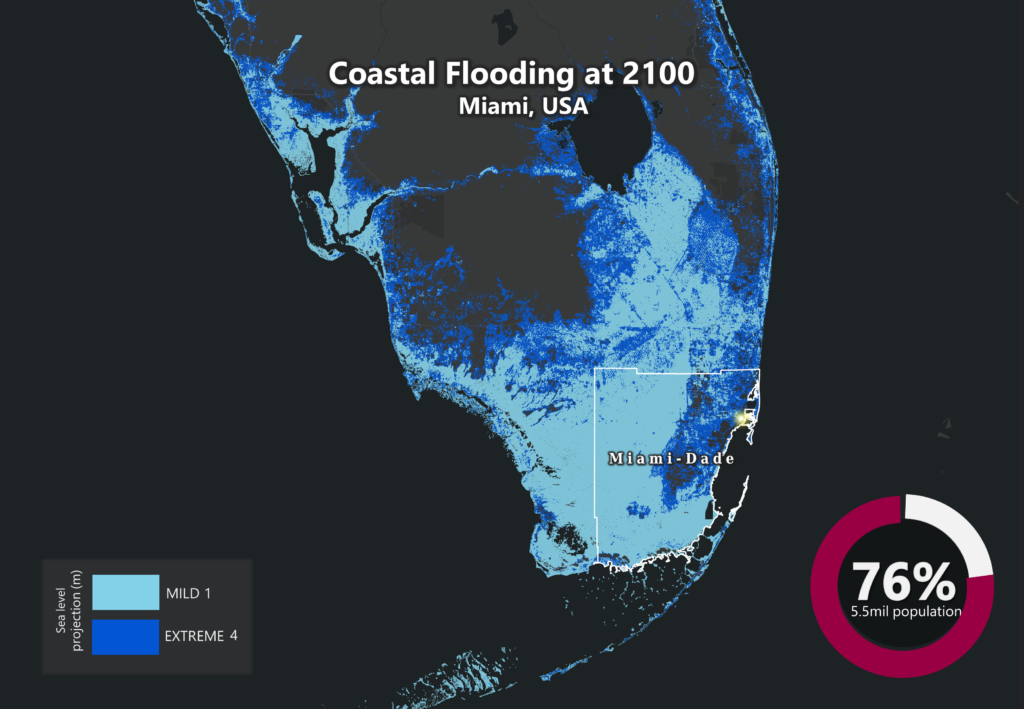
The Mean Higher High Water (MHWW) and 1 foot and 20 inches sea level rise layers are the modeled tidal water surface that has been created using VDatum (NOAA) and 2016 LiDAR topographic data. Two different sets of data are presented in the viewer.
Map of the world after sea level rises full#
View Map Full Screen Data Description and Usage Click here to learn more about the FEMA Region 1 Viewer.

The LiMWA line in this CIRCA viewer was updated in December 2021 to reflect FEMA’s LiMWA Viewer release for New England states, including Connecticut. Any area seaward of the red LiMWA line is either coastal AE or VE zone and must meet new construction requirements outlined in the updated state building code. The coastal AE Zone is depicted on current effective flood insurance rate maps (FIRMs) with the landward limit of the zone labeled “Limit of Moderate Wave Action”. Different projections of sea-level rise/storm surge scenarios will activate automatically at different scales.įEMA’s Limit of Moderate Wave Action (LIMWA) boundary is also shown on this viewer as a continuous red line. Use the Layers menu widget at the bottom of the map window to select data to display. To view the data, zoom in on the map to your area of interest. 7, which was introduced into the 2018 legislative session and was enacted into law as Public Act 18-82. CIRCA’s report on Connecticut sea level rise provided the basis for projections in Bill S.B. CIRCA research recommends that planning anticipates sea level will be 20 inches higher than the national tidal datum in Long Island Sound by 2050. The graphics below show how landmarks such as the Burj Khalifa and Statue of Liberty would look under 3 degrees of warming.This dataset shows different flood maps with sea-level rise projections (1 foot and 20 inches), above the North American Vertical Datum of 1988 (NAVD88) along the Connecticut coastline and the adjacent inland. Plus, even under that limited amount of warming, the Climate Central researchers estimate that 510 million people would be vulnerable to sea-level rise. But that would require major systemic changes to cut emissions, since the world is currently on track to exceed 1.5 degrees of warming in the 2030s, according to the IPCC.

Under the best-case scenario, global temperatures would climb just 1.5 degrees Celsius over the next 200 to 2,000 years, leading to around 10 feet of sea-level rise. Some of that can still be avoided, though. In that case, more than 800 million people could be vulnerable to sea-level rise - and many the world's most important landmarks could be submerged in water. If the world continues on its current emissions path, global temperatures are projected to climb 3 degrees, which would cause seas to rise nearly 21 feet. High tides could encroach on land hosting 15% of the global population (about 1 billion people). In that worst-case scenario, according to the researchers, the resulting flooding would force at least 50 major cities to either start emptying out or mount unprecedented defenses against the water. The IPCC report warned that sea levels will continue to rise for centuries to millennia, no matter what happens next.Ī new study from Climate Central, a nonprofit research group, suggests that 4 degrees of warming could lead to nearly 30 feet of sea-level rise over the next 200 to 2,000 years. Water also naturally expands as it warms, which raises the average sea level. When global temperatures rise, ice sheets and glaciers melt, sending water into the ocean.

A recent report from the UN Intergovernmental Panel on Climate Change (IPCC) found that human-caused emissions have already led the planet to warm by 1.1 degrees Celsius in the last 170 years. More cities will need to prepare for that reality as global temperatures climb, and sea levels rise along with them. But in certain years, like 2019, floods can swallow the city, damaging infrastructure and costing lives. Sometimes, this results in mild flooding - inconvenient puddles along the sidewalk. Several times each year, the tide in Venice, Italy, rises more than 2 feet above the average sea level.


 0 kommentar(er)
0 kommentar(er)
